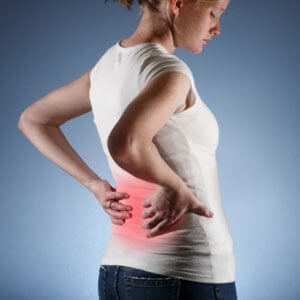 You drop something on the floor, bend to grab it, and ouch! That sudden, stabbing discomfort in your lower back isn’t just annoying—it can stop you in your tracks. But what exactly causes that pain?
You drop something on the floor, bend to grab it, and ouch! That sudden, stabbing discomfort in your lower back isn’t just annoying—it can stop you in your tracks. But what exactly causes that pain?
Bending forward, or spinal flexion, puts a unique type of strain on your body. And for many people, that movement triggers low back pain. Whether it’s occasional or constant, that pain deserves attention. Understanding the cause is the first step toward lasting relief.
Common Reasons Bending Forward Hurts Your Back
Several factors can contribute to pain when you lean forward. These are some of the most frequent culprits:
- Tight muscles and hips: Sitting for long periods can shorten and stiffen your hips and lower back muscles, leading to tension and pulling sensations during movement.
- Disc-related issues: Herniated or bulging discs are one of the most common causes. When you bend forward, pressure is pushed toward the back of the disc, right where it’s most vulnerable. That pressure can cause pain if the disc is already inflamed or damaged.
- Degenerative disc disease: Over time, discs can wear down, dry out, and become less resilient. Flexing the spine may aggravate the area, especially if inflammation is present.
- Joint dysfunction: Though less common in forward motion, issues in the facet joints of the spine can sometimes contribute, particularly if there’s an existing imbalance or misalignment.
Why Sitting All Day Makes It Worse
Most people spend a large portion of their day sitting. Unfortunately, that sedentary posture tightens muscles and weakens core support. When the body lacks stability, it leans too heavily on passive structures, like discs and joints, leading to strain and irritation.
That’s why many people say, “I didn’t even do anything!” after experiencing a flare-up. The actual cause wasn’t a single event; it was the slow buildup from weeks or months of poor mechanics and positioning.
How Chiropractic Can Help Relieve and Prevent Pain
Here’s where care at Lindenwoods Chiropractic can make a difference.
Chiropractic care can ease muscle tension, improve mobility, and support better alignment. We also focus on retraining movement. For example, instead of bending from the lower back, we help patients learn how to bend from the hips, sparing the spine from repeated pressure.
Simple Strategies to Start Using Today
Not ready to come in just yet? You can start easing discomfort at home by building a few simple habits into your day. Try taking breaks from sitting every 30 to 60 minutes to keep your spine moving. Make time to stretch your hips and hamstrings regularly, as tightness in those areas often adds to lower back strain.
Use a proper hip hinge instead of bending through the waist when lifting or reaching down. Strengthening your core muscles provides better support for your spine, and being mindful of posture, whether seated at your desk or standing in line, helps reduce unnecessary pressure. These small shifts in how you move can make a big difference in how you feel.
Don’t Wait for the Pain to Pass
If back pain has been persisting or getting worse, it’s time to address it. The sooner you tackle the root of the problem, the sooner you can return to moving freely and comfortably.
Book an appointment today and let us help you move with confidence again.

